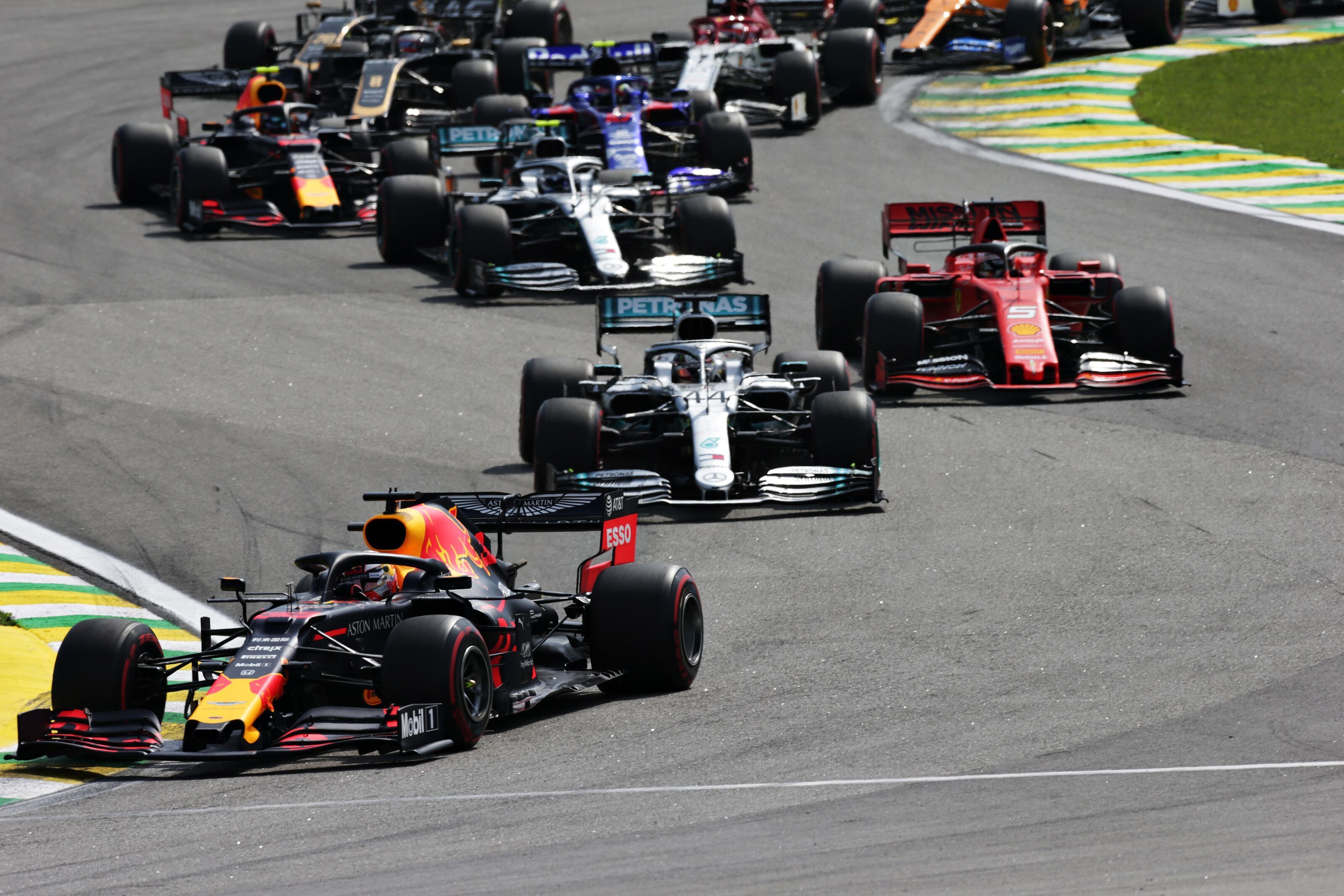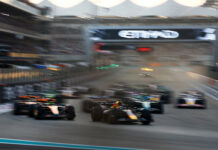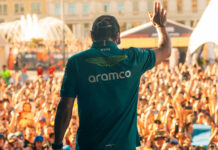Drive to Survive maker Box to Box Films’ Paul Martin shares insights on what goes in creating the Nteflix’s F1 series, reaching to millions worldwide.
A lot goes into making a television series, and especially those in a documentary style. Even excluding the creativity of deciding on topics, you have to also consider the logistics of organising sit-down interviews, or getting camera crews in to areas to get those all-important shots.
To the viewer watching, it may seem simple. However, this is far from the case, and to provide some insights on how F1 Netflix collaboration show, ‘Drive To Survive’ was come up with, and produced, Martin – Executive producer – told F1.com about the whole process.
Since there were details not to be missed, we converted into a point-wise dialouge, here is what Martin said regarding F1 Netflix Drive to Survive:
How the idea came into fruition –
“There was an idea about whether it would be possible to do a behind the scenes with just one F1 team across the season. Sean really liked the idea, but just felt like he wanted to do something that was bigger, that focused on as many of the teams as possible, that was going to show Formula 1 in a completely different light and introduce it to a completely different fan.
“I think Sean and Ian Holmes [F1’s Director of Media Rights] felt comfortable with us because of our background. Sean was like, ‘Look, I’m talking to all the platforms, I want to make a deal and if I do, would you guys be interested in producing it?’ It was one of those conversations that you’re never quite sure if you’re ever going to hear from them again!
“But two or three months after that, we got a call from Sean and Ian saying, ‘We’re going to do this thing, we’re not quite sure what it is but we’d love you guys to produce it.’ That was around Brazil 2017. After that, it moved really quickly.
“We went down to the Brazilian and Abu Dhabi Grands Prix in 2017 and literally knew no one in the paddock bar Ian and [Red Bull Team Principal] Christian Horner. Over the course of those two races, we met all the teams, talked to all the team principals.
Success of the show and having racing drivers as real characters –
“The success of Drive To Survive is because you have such a great cast of characters. To even be a F1 driver, to be one of the 20 best drivers in the world, you’ve got to have something about your character, and whether that’s a Lewis Hamilton or a Daniel Ricciardo, they’re all very different, they’re all very complex in their own ways, and they all deal with the pressure in their own ways.
“It was great to spend some time with Lewis this year. The closer you are to him and the closer you see him, you can’t help but have so much more respect for him. He sometimes gets a hard time in the press, but he was a delight to work with in Germany, and we really got to see the side of him that makes you realise why he’s so successful.
“With someone like Daniel, the Daniel you see on camera is the Daniel you see off camera – he’s like that all the time. Nico, like I say, was incredibly complex in his own way. But all of them make for fascinating viewing and subjects – and I include the team principals in that as well.
“The great thing about this series, and why I think this series could run and run, is that you’re never short of characters and you’ll never be short of those characters providing the level of drama and conflict that you need for this series. I can’t say officially whether there’ll be a Season 3 – but hopefully if the season restarts, we’ll be there.”
The making and effect of Season 1 of F1 Netflix Drive to Survive –
“That first season, there were definitely times where we thought we’d bitten off more than we could chew. Particularly in those early days, we really didn’t have a clue what the shape of the show would be, how difficult it was going to be, whether we could even do it, and how much the teams would buy into it.
“But one of the meetings we’d had in Abu Dhabi had been with [Haas Team Principal] Guenther Steiner, and literally within the first two minutes of talking with him, both James and I were like, ‘Well, that guy’s a character!’ There was just a feeling the moment we met him that if people were willing to talk about the sport and be as honest as this guy, then actually we could end up with a pretty phenomenal show.
“The first season was hard because we had no idea what people’s feedback was going to be. We had no idea if hardcore fans were going to see it and say you’ve dumbed it down too much, or if new fans were just going to find it totally impenetrable. But I remember touching down in Australia in 2019 just after the series had come out and hearing stories about Guenther being mobbed by fans and Carlos Sainz’s cousin [his manager, Carlos Onoro Sainz, who featured in Season 1] being asked for selfies and autographs.
“I think it was the first time that James and I thought that this was actually something that had managed to penetrate above and beyond just a Formula 1 audience.”
Season 2 of F1 Netflix Drive to Survive, and getting the top two teams on board –
“When it came to do Season 2, we managed to get Ferrari and Mercedes on board, which was great. We’d love to have had them in the first series, because we wanted to do a series that featured everyone. But I think in a strange way, it sort of benefitted the other teams that they weren’t in it – but it felt right that they came into Season 2.
“Both of them were brilliant to work with. We’d always maintained good relationships with them throughout Season 1, even though they didn’t play a part, so actually when they came into it for Season 2, it was a very easy transition. Having them in the series was a great coup for everyone. A lot of this series is down to luck.
“If you look at the first series, I don’t think we could have envisaged Haas’ two cars’ wheels literally falling off in Australia. There was a time in Season 1 where I honestly thought Daniel Ricciardo was going to stay at Red Bull. I remember getting a phone call from his manager to say, ‘Just to let you know, it’s about to be announced that we’ve signed for Renault.’ And that dramatically changed the arc of that entire season.
“It was the same with Mercedes in Germany. We’ve been very fortunate to be in the right place at the right time a few times over the last two years and I think that was definitely the case in Hockenheim. It was almost the perfect storm of Lewis not being particularly well, the fact that they dressed up, the special livery – and then to wake up on race day and it be pouring with rain.
“The way the race unfolded – I don’t think we or they could have expected that they would feature in the race like that. But at the same time, I never had a conversation with anyone at Mercedes who asked us to take out a frame from that episode.”
The whole Pierre Gasly/Alexander Albon ‘saga’, and Anthoine Hubert’s crash –
“That was another real story that unfolded in front of us. You could feel the frustration of Red Bull, and you felt for Gasly. I’ve had people say to me they totally understand Red Bull’s decision, and I’ve had other people say to me, ‘I can’t believe that Gasly was treated in the way that he was.’ But I think we let that kind of play out as it unfolded in front of our eyes.
“Red Bull wouldn’t try to pretend that that saga didn’t happen in the way that it did; they took those decisions, it’s well documented that they took those decisions, so therefore it plays out in the series. But similar to Mercedes, there was never a conversation with Red Bull about watering it down in any way.
“Covering Anthoine Hubert’s accident was an incredibly difficult weekend for everybody. If you’ve been to enough F1 races, when there’s a really bad crash, everyone just instinctively knows. You see that clip in the episode of Lewis seeing the accident on the big screen and you just know from his reaction that he knows it’s a bad one.
“It’s very difficult at that point because everyone wants to be incredibly respectful to what’s happened on the track – and I’m really proud of the way that we portrayed it in the series. We were very conscious about wanting to pay tribute to Anthoine and his relationship with one of our key characters, Pierre Gasly – and we wanted to make sure we did it in a sensitive way, that got across what a difficult moment for everyone in the sport that was.
“I think Pierre’s second place in Brazil was the moment I was most pleased we captured in Season 2. Pierre’s a lovely guy, and we’d actually spent a lot of time with him in Season 1, even if he didn’t necessarily feature massively, so by the end of Season 2, we knew him really well. We obviously felt for him with what he’d been through, losing his seat, losing his best friend.
“So that moment in Brazil where he finished second was incredibly emotional for us on the ground, the crew, and clearly very emotional for him. It was just an amazing moment – probably the most amazing moment of both series, to just be there and see this guy who’d gone through hell have, as he says, the best moment of his life. It was a really special race.”
Nico Hulkenberg’s ousting –
“Nico was one of the first people we interviewed for Series 1, and I always found there was a lot going on behind his eyes. His eyes and his expression never lie, despite what he says, and I think in that episode you see it, and I think you really feel for him.
“He knows it’s all coming to the point that it gets to, and without knowing it at the time, that German Grand Prix [when Hulkenberg crashed out of a promising fourth place] was so pivotal to everything. So there’s something about that episode that I really like, and I think it’s to do with Nico.”
Here’s Netflix documentary on Juan Manuel Fangio
Here’s a Netflix video featuring Haas F1 drivers
Here’s episode-by-episode summary of Netflix Drive to Survive S2
The story was edited by Darshan Chokhani



















